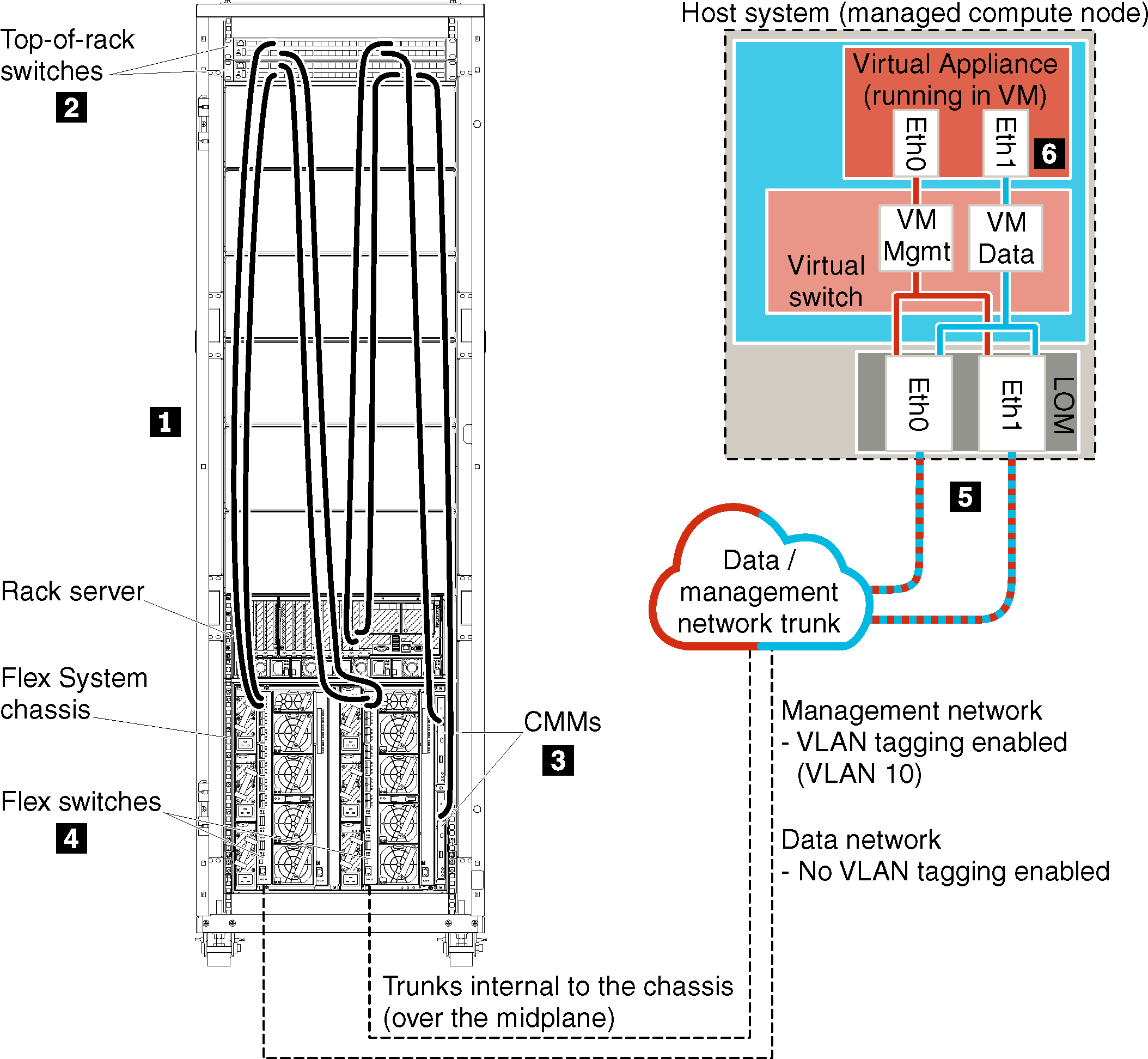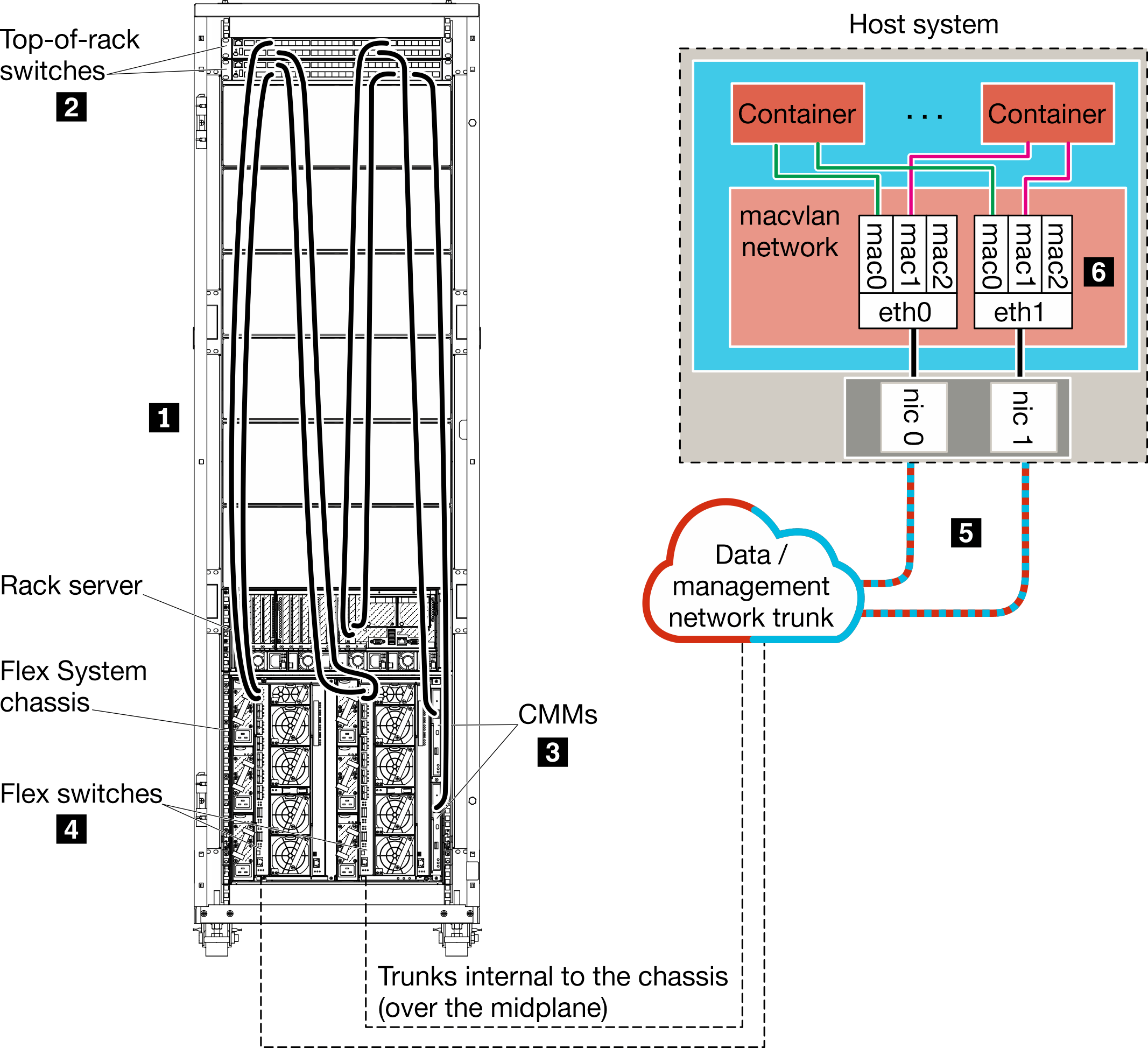Virtually separate data and management network topology (CentOS, Citrix, Docker, Red Hat KVM, Rocky, Ubuntu, VMware ESXi, or Windows Hyper-V)
In this topology, the data network and management network are virtually separate. Packets from the data network and packets from the management network are sent over the same physical connection. VLAN tagging on all management-network data packets is used to keep the traffic between the two networks separate.
Before you begin
Ensure that all appropriate ports are enabled, including ports that XClarity Administrator requires (see Port availability).
Ensure that the minimum required firmware is installed on each device that you intend to manage using XClarity Administrator. You can find minimum required firmware levels from the XClarity Administrator Support – Compatibility webpage by clicking the Compatibility tab and then clicking the link for the appropriate device types..
Ensure that VLAN IDs are set up for the data network and management network. Optionally, enable VLAN tagging from the Flex switches if you implement tagging from the Flex switches or enable from the top-of-rack switches if you implement tagging from the top-of-rack switches.
Ensure that you define the ports to which the CMMs are connected as belonging to the management VLAN.
About this task
The following figure illustrates one way to set up your environment so that the management network is separated from the virtual network. The numbers in the figure correspond to the numbered steps in the following sections.


In this scenario, XClarity Administrator is installed on a server in a Flex System chassis that is being managed by XClarity Administrator.
- You must implement either a virtually separate data and management network topology or a single data and management network topology.
- You cannot use XClarity Administrator to apply firmware updates to that managed server. Even when only some of the firmware is applied with immediate activation, XClarity Administrator forces the target server to restart, which would restart XClarity Administrator as well. When applied with deferred activation, only some firmware is applied when the XClarity Administrator host is restarted.
- If you use a server in a Flex System chassis, ensure that the server is set to automatically power on. You can set this option from the CMM web interface by clicking , then selecting the server, and selecting Auto Power for the Auto Power On Mode.
Also in this scenario, all data is sent over the same physical connections. The separation of the management network from the data network is accomplished through VLAN tagging, in which specific tags corresponding to the management network are appended to incoming data packets to ensure that they are routed to the appropriate interfaces. The tags are removed from outgoing data packets.
- Top-of-rack switches. VLAN tags corresponding to the management network are added to packets as they enter the top-of-rack switch and are passed through the Flex switches and on to the servers in the Flex System chassis. On the return route, VLAN tags are removed as they are sent from the top-of-rack switch to the management controllers.
- Flex switches. VLAN tags corresponding to the management network are added to packets as they enter the Flex switches and are passed to the servers in a Flex System chassis. On the return route, VLAN tags are added by the servers, and passed to the Flex switches, which remove them when forwarding to the management controllers.
The choice of whether to implement VLAN tagging is based on the needs and complexity of your environment.
If you intend to install XClarity Administrator to manage existing chassis and rack servers that have already been configured, proceed to Step 5: Install and configure the host.
For additional information about planning for this topology, including information about network settings and Eth1 and Eth0 configuration, see Virtually separate data and management network.